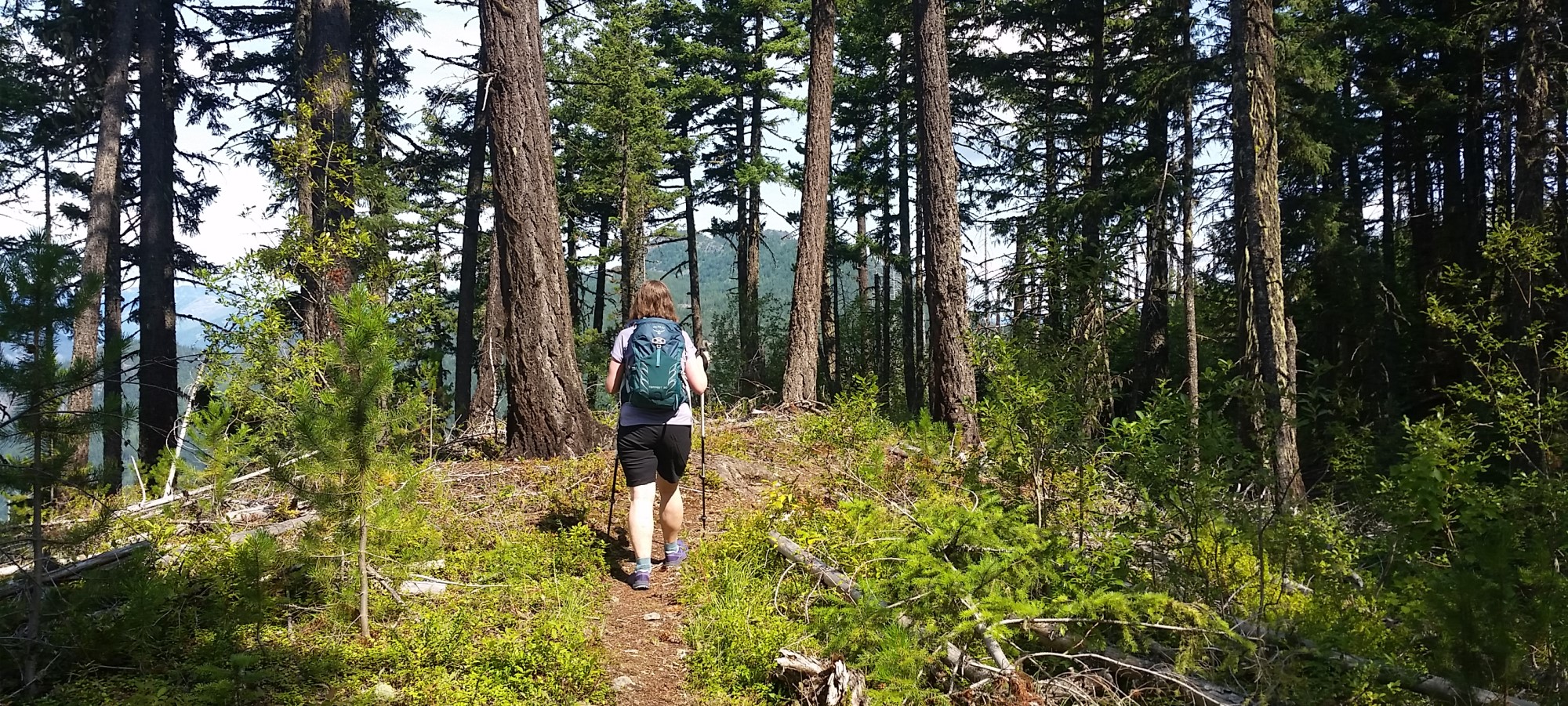Tikwalus Heritage Trail, Photo: K. Walker
Tikwalus Heritage Trail: An Historic Route North of Hope, BC
By Kimberly Walker
Fifty kilometres north of Hope is a hiking trail steeped in history. The Tikwalus Heritage Trail, sometimes also referred to as the First Brigade Trail, is a 12.5 kilometre route that closely follows an ancient Nlaka’pamux (Thompson) path used for hunting, gathering, and providing safe passage through a particularly treacherous part of the Fraser Canyon.
In 1847, Alexander Caulfield Anderson of the Hudson’s Bay Company was seeking a route to connect Fort Kamloops to the Pacific Ocean. With the assistance of Chief Pahallak and the Nlaka’pamux, the HBC finally had their much sought after all-British route and repairs to the trail to make it brigade-worthy began in earnest.
In 1848, the first HBC Fur Brigade set out on the new route with disastrous results for human, horse, and cargo. Of the 400 horses that left Fort Kamloops, 70 were lost by the time the brigade returned to Fort Kamloops three months later. Numerous pieces of cargo were lost during the journey, and the stresses of the trip drove one HBC employee to take his own life. The costs of the First Brigade Trail were simply too high. After being used only three times, the First Brigade Trail was abandoned by the HBC and an easier route through the Cascade Mountains was found.
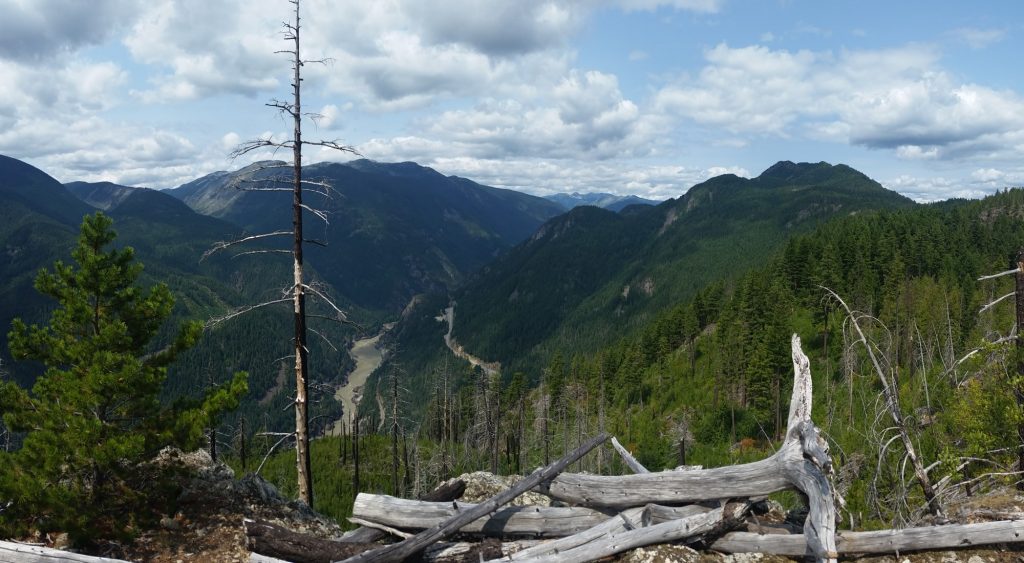
Although the HBC was finished with the 1848 trail, it continued to be used by the local First Nations and then in the 1850s and 60s it reclaimed some popularity thanks to the many gold-seekers who flooded into the region.
The trail once again became a going concern in 2011 when the Hope Mountain Centre for Outdoor Learning, in partnership with Spuzzum First Nation, New Pathways to Gold Society, the Ministry of Transport, and Recreation Sites and Trails BC, began restoration work on the infamous 1848 trail. In April 2012, the opening ceremony celebrated the immense work in signage, camping facilities, and trail improvements, including bridges and trail bed repair, which had been done.

Today, hiking the 1848 trail is an extremely worthwhile way to spend a day or two. The trail leaves from a parking area just north of the Alexandra Lodge, easily recognizable thanks to the large interpretive signage providing information about the route’s history. The trail has essentially no warm up, and from the time you set foot on the trail you are headed up, up, up. The unrelenting grade of the first two kilometres may have you questioning your life choices, and after kilometre two the trail continues to be almost as steep as before. All in all, the first four and-a-bit kilometres of the trail are essentially straight up and you will gain over 700 metres by the time you reach the junction of the Lakes Route and Bluffs Route.
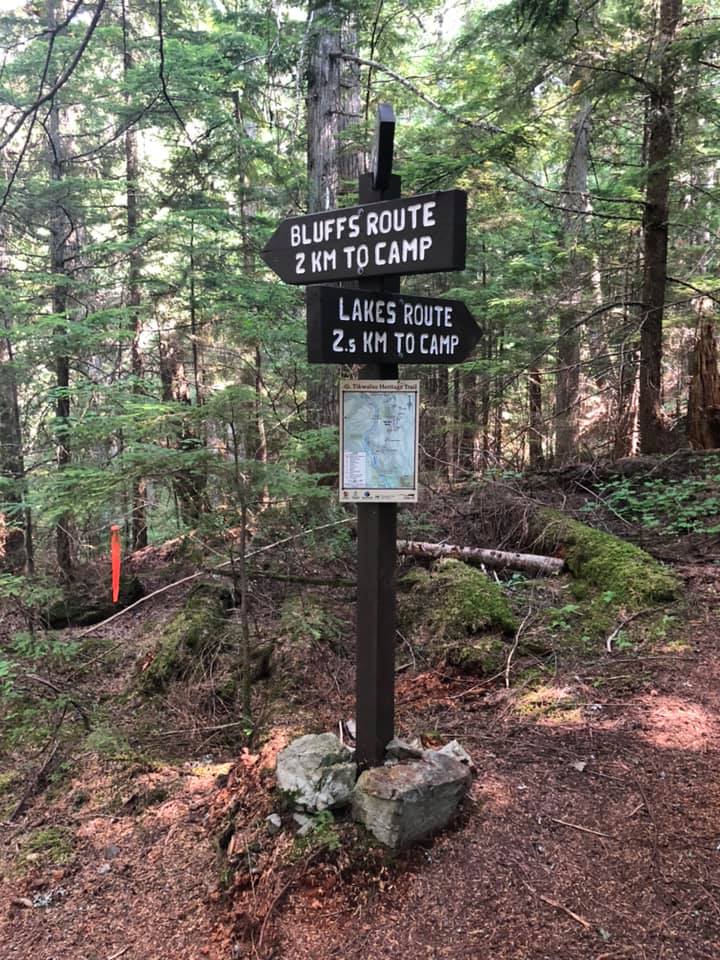
From here, mercifully, both routes level out. If you intend to complete the circle route, my suggestion would be to first tackle the Lakes Route and head towards the estimated location of Lake House – one of the stopping points on the old brigade trail. From here, carry on to Yew Gardens – so named because of the unusually dense concentration of Western Yew trees found in this area. After this, only another half kilometre separates you from the campsite location where benches, a picnic table, and an outhouse make for a perfect lunch spot. If you are planning an overnight trip, this location also offers several tent pads and a secure food cache.
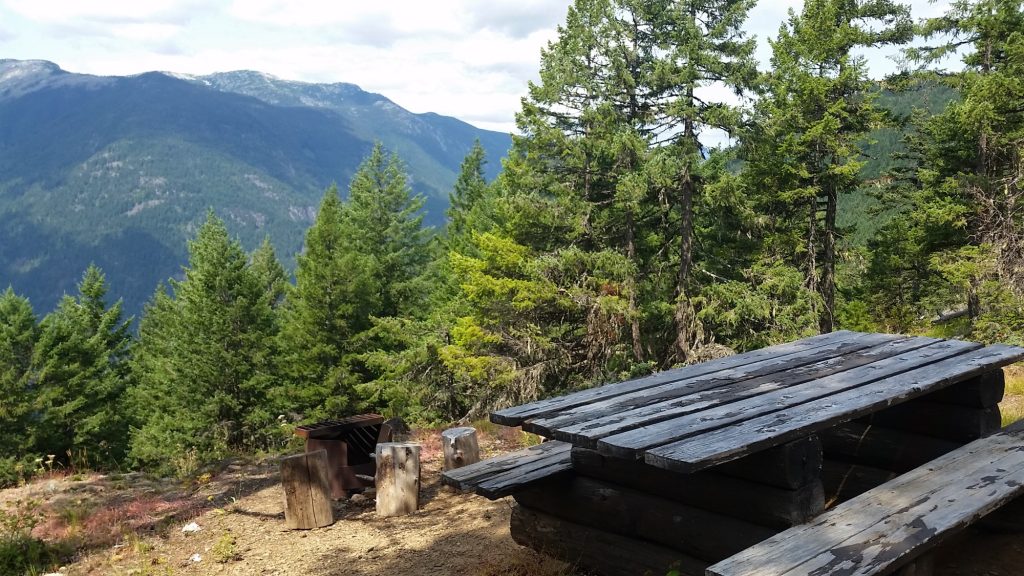
After refuelling yourself, start heading south along the Bluffs Route with the knowledge that the most beautiful views of the trail are still ahead of you. After a kilometre or so of peek-a-boo views, the gorgeous Black Canyon Viewpoint emerges ahead of you and suddenly all that uphill hiking becomes worth it. From this spot, the views are a spectacular panorama. Keep an eye out for trains and vehicles winding their way along the edges of the canyon below and take time to soak in your surroundings.
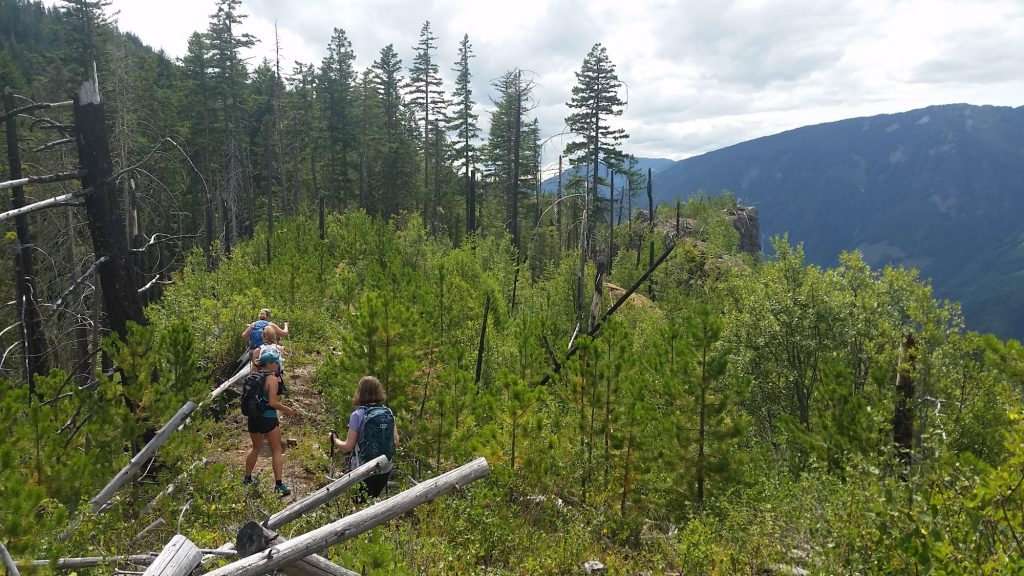
Continue south on the Bluffs Route where it will eventually re-join the main trail where you initially branched off on the Lakes Route. From here, you are reversing your up, up, up trajectory with four kilometres of down, down, down. Hiking poles, while undeniably helpful on the ascent, become a critical knee-saver on the descent.
Hiking the Tikwalus Heritage Trail is an opportunity to take a walk through BC’s history. However, we have one major advantage over those who have walked the trail before us: we are able to stop at Barry’s Trading Post or Hope River General Store for an ice cream on our way home!
For accommodations in this area and elsewhere in British Columbia go to travel-british-columbia.com
Share your BC travel pictures using hashtag #travelinbc
Published: October 3, 2019
Last Updated: December 7, 2023

About the Author
Kimberly is a Special Education, Elementary School teacher in Hope, BC. Previously having worked ten years at the Hope Visitor Centre & Museum promoting tourism in Hope and British Columbia, Kimberly worked on many local history projects in the museum as well as researching and writing articles for the local newspaper. Kimberly loves travelling with her husband Dale and their dog Alpine. In the fall of 2014, they spent the first 78 days of married life travelling and camping their way across Canada - just the two of them and the dog - travelling in a Hyundai Elantra! Kimberly loves various outdoor recreation types and exploring our beautiful province.
Categories
- Accommodation
- Activity
- Beachcombing
- Biking
- Breweries & Cideries
- Campfire Activity
- Chair Lift or Gondola
- Childrens Activity
- Dancing or Music
- Dining
- Drives and Circle Tours
- Eating
- Farm Animals
- Farmers Markets
- Ferry Ride
- Festival
- Film Buffing
- Fishing
- Flying
- Four by Fouring
- Gold Panning
- Golfing
- Hiking
- Hockey
- Horse Racing
- Hot Springs
- Kayaking
- Motorcycle Camping
- Music
- Paddleboarding
- Plants & Berries
- Rafting
- Running or Walking
- Shopping & Gifts
- Skating
- Skiing
- Snowshoeing
- Star Gazing
- Storm Watching
- Sweets and Candy
- Swimming
- Watersports
- Wildlife Viewing
- Wine Tours
- Attraction
- British Columbia

